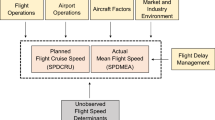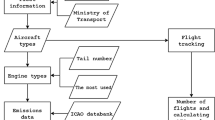Abstract
A metric has been developed that, for the first time, makes it possible to measure the fuel inefficiency resulting from the action of Air Traffic Control, by recording a few simple, specific, straightforward components of a flight. A significant benefit of this approach is that it can be completed efficiently – without expensive data gathering and without complex calculations, making it transparent and meaningful to stakeholders. On the basis of this novel analytical work NATS, with the technical support of its OR analysts, was confident to hold constructive discussions with the UK Civil Aviation Authority on the incorporation of the 3D inefficiency score within the existing service quality regulation scheme. This was important for NATS En Route Limited (NERL) as it effectively helped define part of its business operating environment. The service quality scheme provides the regulator with a means of imposing financial reward or penalty based on the service quality delivered by NERL. Therefore, this will have a direct effect on NERL revenue during forthcoming financial regulation periods.








Similar content being viewed by others
Notes
User Manual for the Base of Aircraft Data (BADA) Revision 3.7, EEC Technical/Scientific Report No. 2009-003, EUROCONTROL, March 2009.
A Flight Level (FL) is a standard nominal altitude of an aircraft, in hundreds of feet. This altitude is calculated from the international standard pressure datum of 1013.25hPa.
Manual of the International Standard Atmosphere extended to 80km (262,500 feet), ICAO Doc 7488, ISBN 92-9194-004-6.
NATS Fuel Burn and Related Emissions Model (KERMIT) – Update to Version 4, OA0975, Kathryn Walker, December 2009.
Within the UK Flight Information Region (UKFIR) from the first point until the last point of radar contact (that is while receiving a chargeable NATS service).
Which is approximated as a geodesic track (that is a segment of a great-circle route). This is valid since the maximum geodesic in NATS airspace is <1000 nautical miles (NM) in length.
Statistical power analysis for the behavioural sciences (2nd edn.), J. Cohen, 1988.
Statistical similarity is determined using k-means clustering implemented using SPSS where
 [Multivariate Analysis, Kanti Mardia et al (1979), Academic Press.] and n is the size of the dataset. In this case n=365 (days per year) and the closest integer value is k=14. Variation in seven characteristics were considered for each day.
[Multivariate Analysis, Kanti Mardia et al (1979), Academic Press.] and n is the size of the dataset. In this case n=365 (days per year) and the closest integer value is k=14. Variation in seven characteristics were considered for each day.
Acknowledgements
Emissions figures in this document have been produced using BADA data. This product has been made available by the European Organisation for the Safety of Air Navigation (EUROCONTROL). All rights reserved.
Author information
Authors and Affiliations
Rights and permissions
About this article
Cite this article
Hammond, S., Civil, J., Ross, M. et al. Air traffic control, business regulation and CO2 emissions. OR Insight 25, 127–149 (2012). https://doi.org/10.1057/ori.2012.5
Received:
Accepted:
Published:
Issue Date:
DOI: https://doi.org/10.1057/ori.2012.5





 [Multivariate Analysis, Kanti Mardia et al (1979), Academic Press.] and n is the size of the dataset. In this case n=365 (days per year) and the closest integer value is k=14. Variation in seven characteristics were considered for each day.
[Multivariate Analysis, Kanti Mardia et al (1979), Academic Press.] and n is the size of the dataset. In this case n=365 (days per year) and the closest integer value is k=14. Variation in seven characteristics were considered for each day.